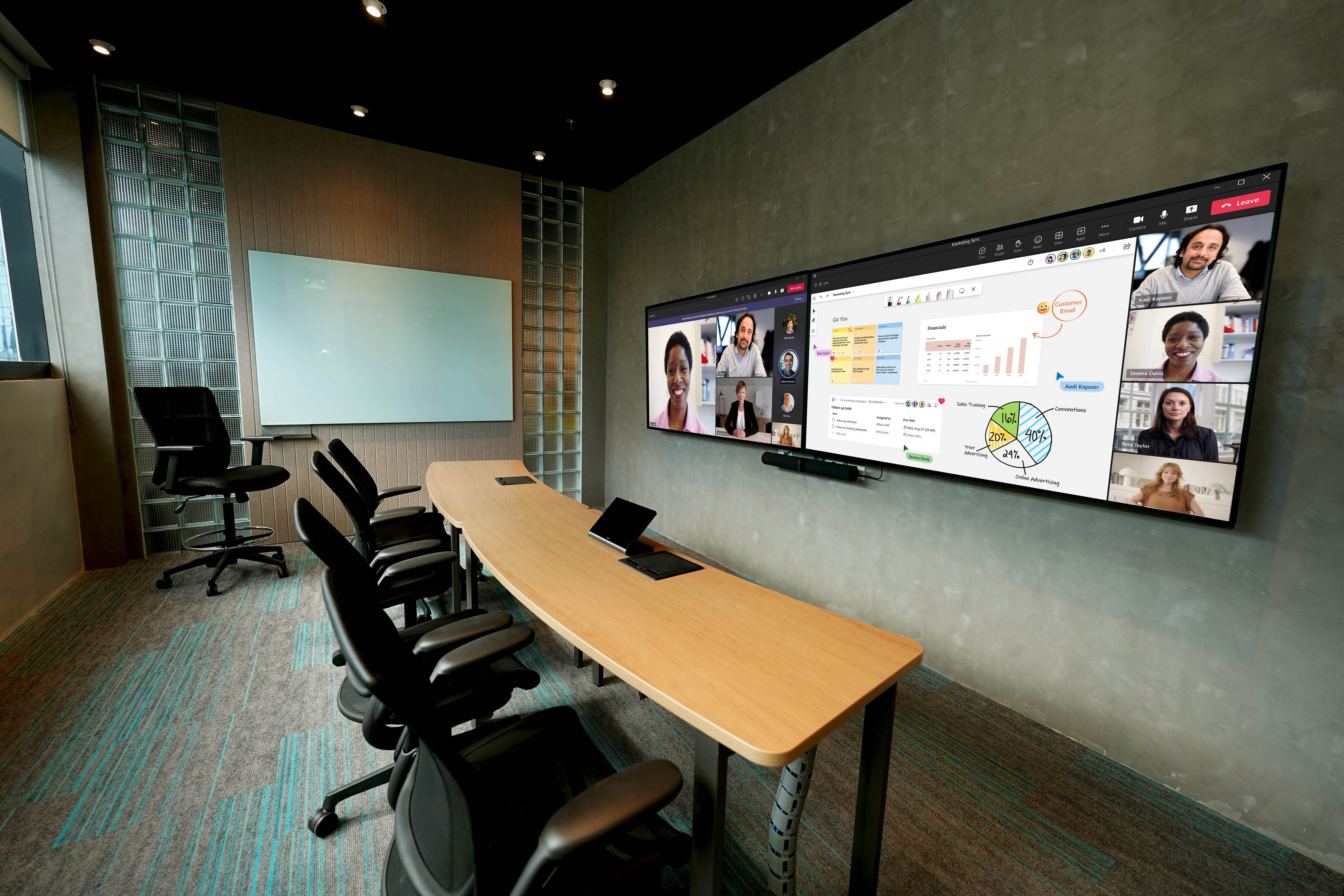How to Choose the Best AV Systems for Corporate Meetings

Meetings are no longer just sitting around a screen. Whether your team is in the room, across the city, or working from home, bad audio or video can ruin the flow. The right AV system makes every voice heard, every slide clear, and every idea count. If your company cares about results and professionalism, a weak setup is not an option.
A smart AV system grows with your needs and keeps frustration out of every meeting. Let’s look at what makes a great AV setup and how the right solutions can make every meeting more productive and impressive.
Why the Right AV System Matters
What happens when AV systems are under-specified or not matched to the room and meeting needs? Meetings become frustrating. Voices can be hard to hear, video feeds may be blurry, and remote participants might struggle to contribute. This leads to wasted time, miscommunication, and a drop in professionalism, which no leader wants.
A well-chosen AV system makes sure every participant is clearly seen and heard, whether in the room or joining remotely. It supports smooth and efficient collaboration while reflecting your organisation’s professionalism and culture. Strong AV solutions protect meeting quality, improve stakeholder confidence, and ensure operations run reliably.
Understanding Your Meeting Needs
Identify Meeting Types
Think about the types of meetings your team holds most often. Are they small huddles, formal presentations, hybrid team sessions, or large all‑hands meetings? The AV needs for a four‑person brainstorming session are very different from a 50‑person hybrid town hall. Choosing AV systems that match the meeting type saves money and ensures they work effectively.
Consider Room Size & Layout
Room size, shape and seating layout play a major role in choosing the right AV setup. A small meeting room will need a different approach compared with a wide boardroom or a multi-purpose space. Clear views, good sight lines, proper microphone coverage and balanced speaker placement all depend on understanding the room accurately.
Determine Platform Integration & Connectivity Needs
Identify the collaboration tools your organisation relies on, such as video conferencing platforms, presentation software, BYOD policies, guest device access, content sharing, and remote participation. Your AV system should connect smoothly with all of these tools, support different user habits, and keep meetings running without delays or technical confusion.
Anticipate Frequency & Usage Patterns
How often are meetings held, and how important is uptime? For daily or high-priority meetings, reliability and ease of use should come before cost savings. If meetings happen less often, a simpler setup may be enough. Understanding how often and how heavily your rooms are used helps you choose the right balance of performance, cost and maintenance.
Choosing the Right AV System for Different Room Types
Huddle Rooms (2–6 people)
For small team sessions a compact audio‑video unit or soundbar with built-in mic array is often sufficient. A single 360° mic or small speakerphone placed at the table centre can reliably capture all voices. A modest display or monitor ensures visibility without overwhelming the space. This setup keeps installation and cabling minimal while delivering acceptable quality for small groups.
Small Meeting Rooms (6–12 people)
For slightly larger groups you need better audio, such as ceiling microphones or several tabletop microphones with good speakers. A bigger screen or two screens helps everyone see the content clearly. A dedicated conferencing unit with a camera, microphone, and speaker keeps hybrid meetings smooth. This setup reduces connection problems and makes meetings more productive.
Boardrooms (12+ people)
Large rooms need speakers on the ceiling or walls so everyone can hear clearly. Multiple microphones make sure every voice is picked up. High-definition cameras like PTZ or auto-framing let remote participants see everyone. You may also need several screens or projectors, and networked AV equipment with good cabling keeps audio and video reliable.
Training Rooms & Auditoriums
For large meetings, you need a system that works reliably. Use several cameras to show the presenter and the audience. Microphones and wireless mics make sure everyone can be heard. Big screens or projectors help everyone see clearly, and speakers spread sound evenly. Backup systems and remote management keep everything running smoothly.
Key Components of a Corporate AV System
A strong corporate AV system depends on two main areas: audio and video. Each part must be carefully planned to ensure meetings run smoothly and participants can communicate clearly.
Audio Systems
Good audio is very important because poor sound can ruin even the best visuals. Ceiling, tabletop and wireless microphones suit different room sizes. Speakers can be placed in the ceiling, on walls, or set up as line arrays for bigger rooms. A digital processor keeps noise down, balances volume and stops echo. The result is clear sound for everyone, whether in the room or online.
Video Systems
Video includes cameras, screens and projectors. Choose cameras based on room size and meeting type, such as PTZ or 4K for large rooms and 1080p for small rooms. Make sure screens are easy to see for all participants and add extra screens for larger rooms. Ensure video, audio and content are all synced so remote participants have the same experience as those in the room.
Connectivity & Power
Network and power planning is just as important as audio and video hardware. Networked devices may rely on Power over Ethernet, while all cabling should be organised and protected to prevent damage or interference. Ensuring proper connectivity and power distribution reduces the risk of technical problems and keeps meetings running reliably.
Integrating AV Systems with Collaboration Tools
First, make sure your AV equipment works with the collaboration tools your organisation uses. Whether you use cloud-based or on-site platforms, using certified endpoints or standard protocols reduces compatibility problems and setup issues. Integration also cuts down on repeated manual setups and user errors.
Next, ensure smooth scheduling, user access and simple control. A good AV system gives easy control, for example a wall panel or simple interface to turn on systems, select cameras or inputs, adjust audio and start meetings with one tap. This saves time and reduces the need for IT support.
Finally, plan for future needs. If your company changes meeting styles or tools, the system should allow upgrades such as extra cameras, microphones or screens, and software updates. A flexible, modular setup keeps the system useful for longer and avoids frequent replacements.
Planning for Scalability & Future Needs
Planning AV systems for the future means choosing setups that can grow with your organisation. Choose modular systems so you can add cameras, microphones or screens without changing the wiring. Use networked devices, such as AV over IP, to make expansion and maintenance easier.
Think about new trends like AI audio features for noise reduction, auto-framing cameras for hybrid meetings, and centralised room management tools. These keep your system relevant as collaboration changes. Flexible, software-upgradable solutions reduce the need for new hardware and keep meetings running smoothly.
Selecting Vendors & Managing Procurement
First, set clear requirements before sending requests for proposals (RFPs), such as room size, expected number of people, meeting types, platform compatibility, and future growth needs. Clear details help vendors offer systems of the right size and avoid over- or under-provisioning.
Ask for demonstrations or site visits before buying. The vendor should walk through the space, test audio, check camera and screen sightlines, and suggest the best placement. This avoids guesswork and shows any sound or lighting problems that could affect performance.
Check the support services, warranties, and maintenance plans. AV systems are complex, so reliable vendor support and service-level agreements (SLAs) help fix problems quickly. Also, think about whether to outsource installation and maintenance or handle it in-house based on your organisation’s capacity and long-term plans.
Final Thoughts
Choosing the right AV system is key to running smooth and professional meetings. Clear audio, sharp video, and reliable connections make sure everyone can participate, whether in the room or online. Understanding your meeting types, room sizes, and technology needs helps you pick the right system. Planning ahead and investing in good equipment prevents delays, frustration, and extra costs.
Flexible AV systems help your organisation grow. Modular setups and networked devices make it easy to add cameras, microphones, or screens when needed. Reliable vendor support and maintenance plans mean problems are fixed quickly without interrupting meetings. With the right planning and technology, every meeting can be efficient, professional, and productive.
Don’t let poor audio or video slow your success. Invest in the best AV solution that grows with your organisation and supports every meeting, whether in-person or remote. Contact us today!

How to Choose the Best AV Systems for Corporate Meetings
.png)
Digital Signage vs Athena Signage: Is Athena Signage Worth the Upgrade for Workplace Communication?
.png)

